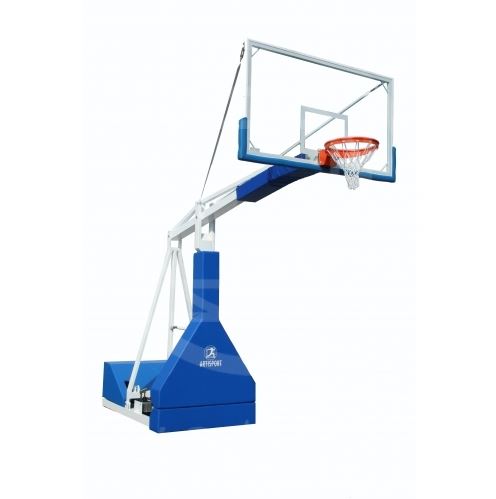When it comes to choosing a basketball system, there are a lot of factors to…
7 Essential Key Components of a Basketball System
A basketball system is an essential component of any basketball court, whether it’s a professional arena or a backyard court for recreational play. It consists of several key components that work together to create a safe and enjoyable playing experience. In this blog post, we will explore the key components of a basketball system and their importance in ensuring a successful game.
Basketball Hoop
The basketball hoop is the central and most recognisable component of a basketball system. It consists of a round metal rim and a net, mounted at a regulated height of 10 feet above the ground. The hoop is where players aim to shoot the basketball and score points. It should be sturdy, durable, and have a spring-loaded mechanism to absorb the impact of the ball.
Backboard
The backboard is the rectangular surface behind the basketball hoop. It provides support for the rim and backstop, as well as a rebound surface for missed shots. Backboards are typically made of materials like acrylic, tempered glass, or polycarbonate. The material chosen affects the rebound quality and durability of the system. A clear, unobstructed backboard allows players to track the ball during games.
Pole or Post
The pole or post is the vertical structure that supports the basketball hoop and backboard. It must be stable and securely anchored to the ground to prevent shaking or tipping during aggressive play. Poles can be made of different materials such as steel or aluminium, and their thickness and design impact the overall stability of the system. Adjustable poles allow for height customisation, catering to players of different ages and skill levels.

Base
The base is a crucial component that provides stability and support to the basketball system. It is typically a large, weighted structure made of materials like plastic or steel. The size and weight of the base depend on the type of basketball system and the playing environment. Portable systems have a base that can be filled with water or sand to prevent the system from tipping over during vigorous play.
Height Adjustment Mechanism
A height adjustment mechanism allows players to adjust the height of the basketball hoop. This feature is especially important in home systems where players of various ages and skill levels will be participating. There are different types of height adjustment mechanisms, including telescopic poles, crank systems, and pneumatic systems. Having the ability to modify the hoop’s height ensures a more inclusive and versatile playing experience.
Padding and Safety Features
To enhance player safety and prevent injuries, basketball systems often include padding and safety features. This can include pole pads to cushion the impact, padding on the backboard edges and base, and breakaway rims that flex upon impact, reducing the chance of finger and wrist injuries. Safety features are crucial, particularly in systems used by young and inexperienced players.
Basketball Net
The basketball net is a simple but important component of a basketball system. It attaches to the rim of the hoop and helps players determine if their shot was successful by providing a visual cue. Basketball nets are typically made of nylon or chains and can withstand the elements, including wind and rain.
Conclusion
A well-designed basketball system consists of several key components that work together to ensure a safe and enjoyable basketball experience. From the basketball hoop and backboard to the pole or post, base, height adjustment mechanism, padding, and safety features, each component plays a vital role in creating an ideal playing environment.
Whether you’re a professional athlete or a recreational player, investing in a high-quality basketball system that incorporates these key components is essential for a successful game. So, gather your gear, assemble your team, and get ready to play with confidence on a well-equipped basketball system.













